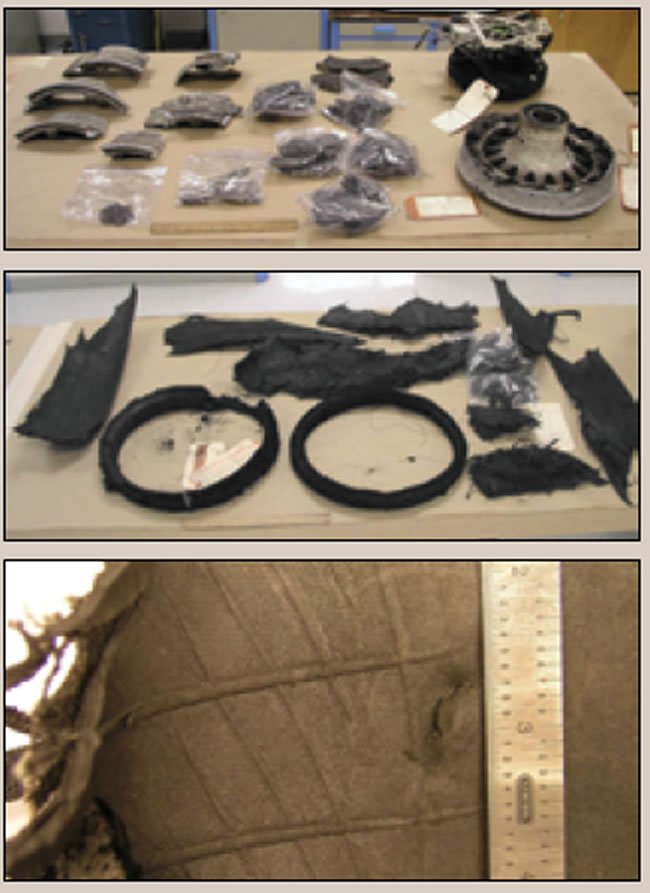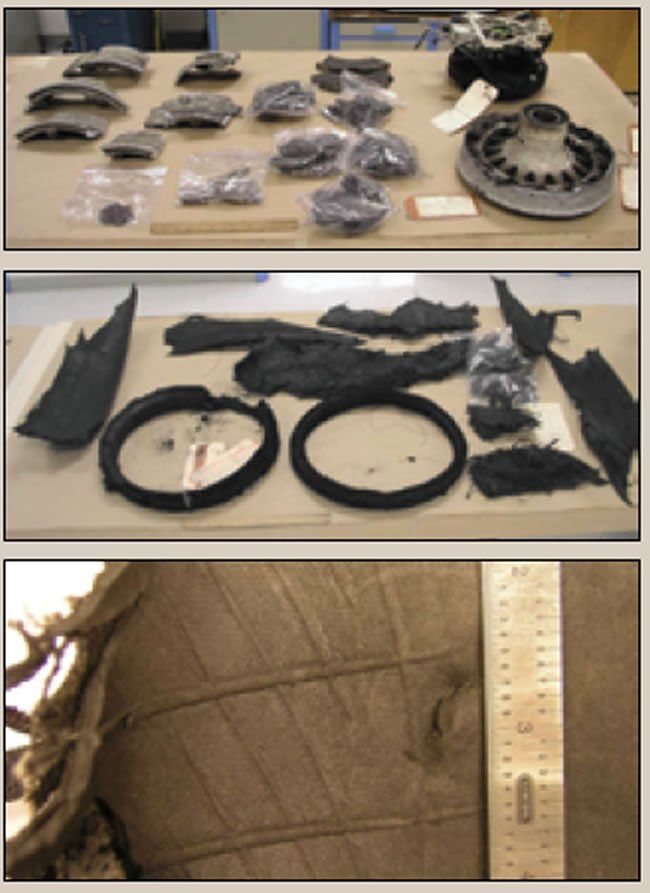These three photographs document the damage to the F-16s wheel (top) and tire (middle). Most of the wheel damage occurred when it struck a slightly elevated lip in the runway pavement at around 100 knots, well after the tire had failed. Remains of the tire include its circular bead structure and what was found of its tread and sidewalls.

The photo at bottom is of the interior of the tires tread, showing the point at which it was punctured by FOD, probably a screw.
While tires installed on the typical personal airplane neither support the weight of an F-16 nor see the same rotational speeds, a failure at the wrong time can easily send you into the weeds, or worse.
According to Boeing, Maintenance activities…require a variety of small objects, such as rivets, safety wire, and bolts, that become FOD when they are inadvertently left behind. An effective tool control program will reduce the number of missing hand tools. FOD typically peaks during the early spring, when airports often begin construction activities, and during the winter because of operations in snow and ice.




